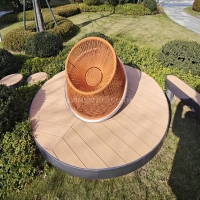Welcome to the website for landscape facilities products and knowledge.
How does the design ensure the trash can is resistant to warping in high heat?
When exposed to high temperatures, traditional trash cans can warp, deform, or even melt, compromising functionality and aesthetics. To combat this, modern heat-resistant trash cans incorporate several key design and material innovations.
1. High-Quality Materials: Premium plastics like polyethylene (HDPE) or polypropylene (PP) are often used due to their high melting points and resistance to thermal distortion. Some models also feature metal reinforcements for added stability.
2. Structural Reinforcements: Ribbed or double-walled designs distribute heat evenly, reducing stress points that cause warping. Ventilation slots may also be included to dissipate heat buildup.
3. UV Stabilizers: For outdoor use, UV-resistant coatings prevent material degradation from prolonged sun exposure, which can weaken the structure over time.
4. Thickened Walls: Extra thickness in critical areas enhances durability, ensuring the bin maintains its shape even under extreme heat.
5. Testing Standards: Reputable manufacturers subject their products to rigorous heat-resistance tests, simulating long-term exposure to high temperatures to guarantee performance.
By combining these features, heat-resistant trash cans remain sturdy and functional in hot climates, making them ideal for outdoor spaces, commercial use, or regions with intense sunlight. Investing in a well-designed bin ensures longevity and avoids the hassle of frequent replacements.
Related search:

Recommendation
Swivel chair-Specialty steel structure woven rattan leisure chair with rotatable design